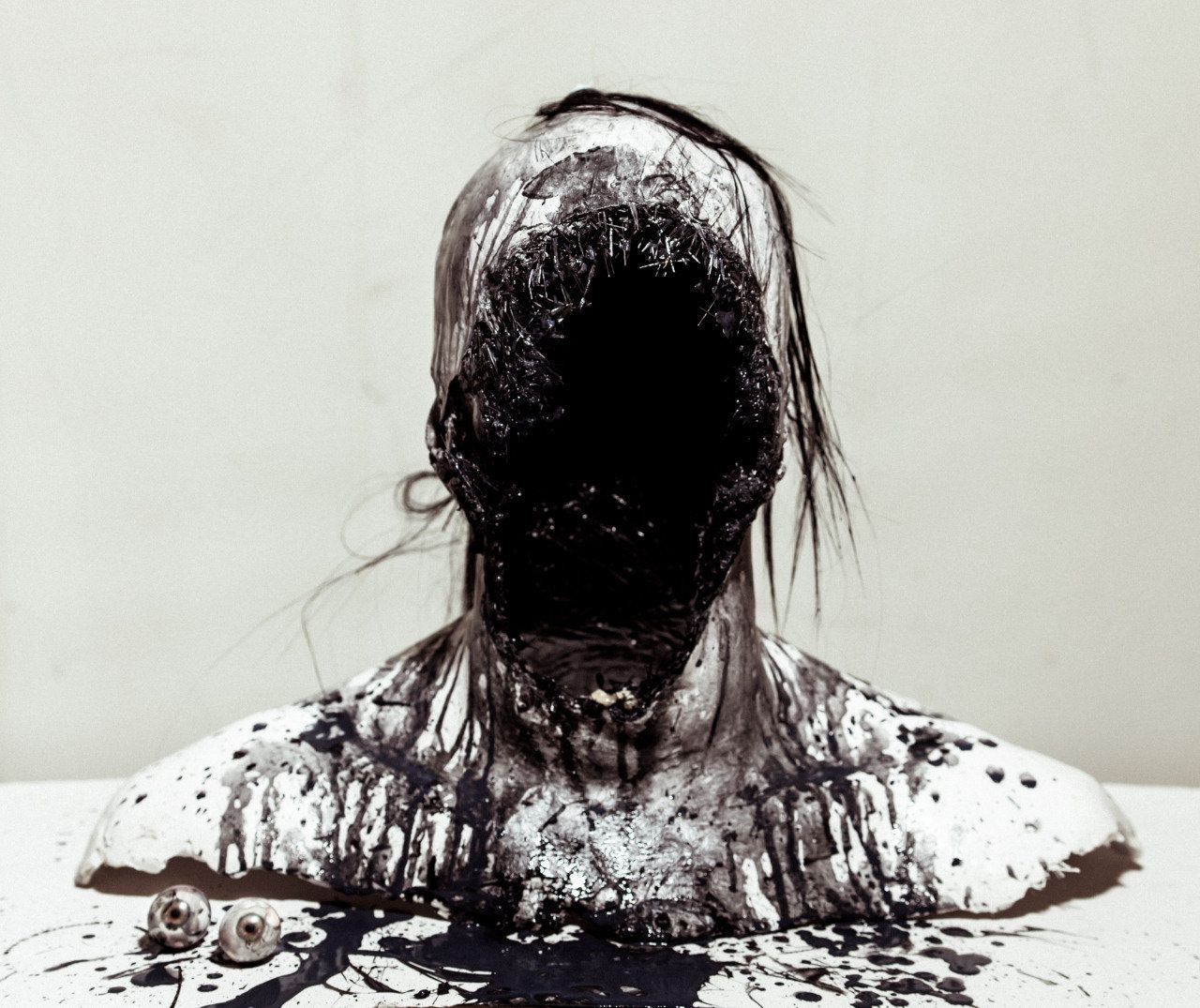There are certain tropes we've come to recognize and expect when it comes to horror in film. The suspicious glance. The car that won't start. The rattling door. The flickering lights. The silence that swells with intensity. The thing itself and the blood it leaves behind. There's a narrative arc that escalates and explodes, then settles into eerie tranquility. The horror itself is sandwiched between fluffy slices of comfort and safety.
But in a work of art, the timing is all off. There's no building of suspense, no spooky soundtrack to signal: Danger! Danger! There's just the image, the thing itself, without explanation or resolution.
Artist Sarah Sitkin makes sculptural artworks that will make all your little arm hairs stand at attention. Gruesome and festering, Sitkin's multimedia creations resemble the face of a monster revealed three quarters through the story to wreak havoc. Only Silkin's mutated forms, grounded in bodily functions gone awry, come out of nowhere, and never face defeat. They linger there, on the page, in your memory, immortal and indomitable.
Sitkin grew up, not too surprisingly, in Burbank, California, a city just northeast of Hollywood, housing copious film studios and entertainment-centric businesses. "My family runs a small hobby shop that my grandpa started in 1946 called Kit Kraft," the artist said in an interview with The Huffington Post. "In the '90s the shop was a hub for SFX artists and I remember, as a kid, seeing these guys come into the shop with sculptures of creatures, masks of all kinds, models of alien spacecrafts, and dioramas of prehistoric lands. These early experiences definitely wove themselves into my subconscious mind."
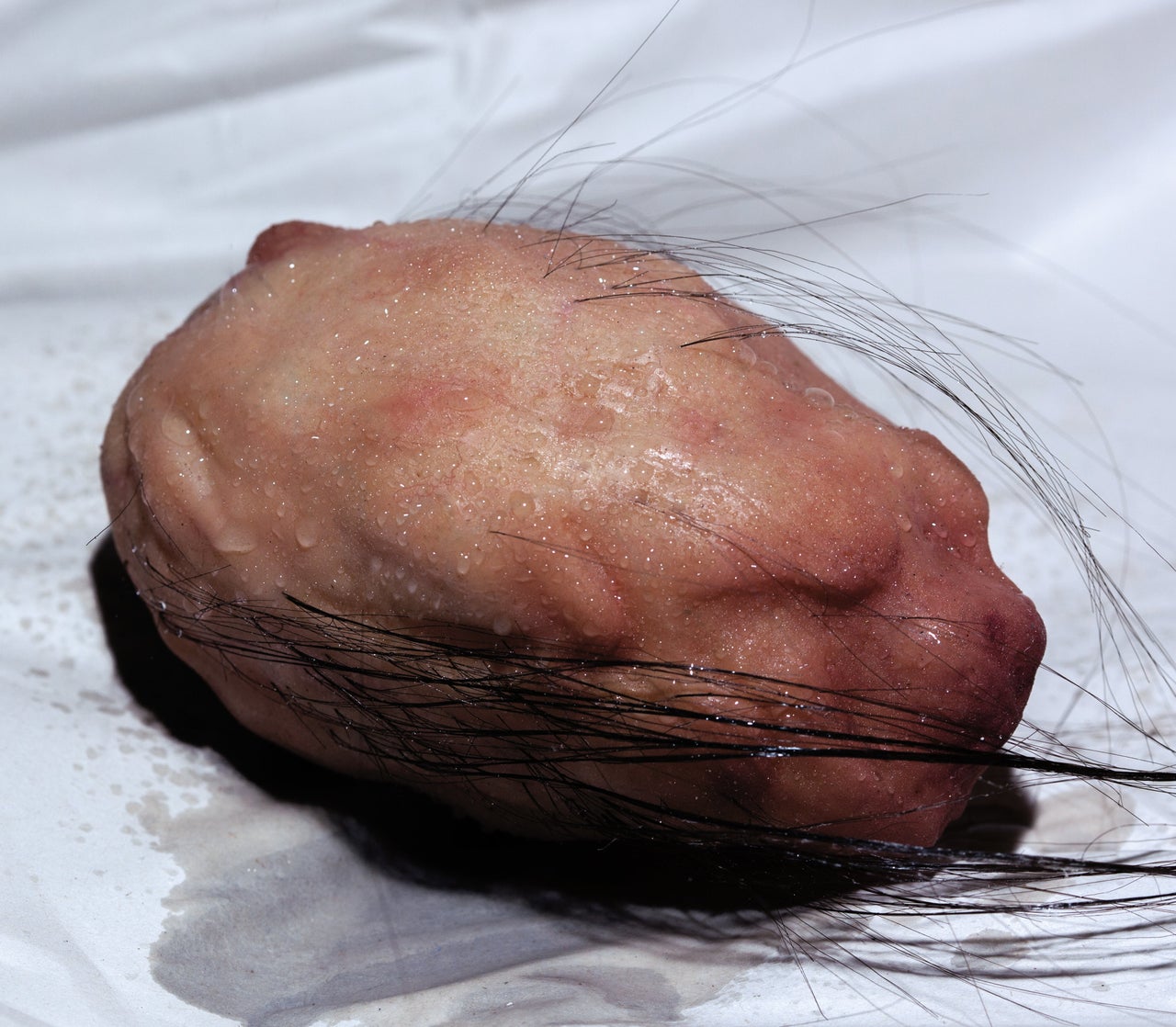
Growing up in one of the entertainment capitals of the world, Sitkin drank up the glamour and gore of the horror industry. "Films had a huge impact on me, as a young person. Cinema with little dialogue captivated me, and demonstrated the emotional power of imagery in motion. Particularly the work of Švankmajer, Parajanov, Jodorowsky, and Kubrick."
Sitkin started making art as a child using mostly paint and found objects. She later began to experiment with other media including molding, casting, photography and installation. Today she has honed a sculptural process all her own. "I don't know what to call it," she explained, "I just want to keep creating without limiting myself to certain materials or a specific process."
"I will take molds of bodies, sculpt out objects, collect materials, paint details, punch tiny hairs into silicones, partially destroy my past artworks, and then arrange the parts together. I use lighting to further refine and focus the intentions of the piece. Every detail has meaning to me. I then take a picture of the piece and subtly swing the color until there is a harmony within the image. Each image that has emotional significance to me has a sound to it. It could be a buzzing, crackling, or distant humming sound. It's different for every piece."

In film, horror creeps up on you before the mask is revealed and the blood and guts spilled. With images, however, time operates differently. The horror hits all at once, ready or not, and how long the viewer stays around to ogle the carnage is up to her.
But long before horror became a genre foremost experienced on the screen, artists were harnessing their bodily angst into contorted renderings of monsters and mutants that look, at their core, human but not. In the 15th century, Hieronymous Bosch visualized a sweaty, crowded purgatory packed with naked bodies and mismatched parts, wayward eyeballs, gaping mouths that morph into other bodily cavities, fingers that claw and lips that howl without sound.
In the 20th century, painters like Francis Bacon conducted surgery with a paintbrush, unhinging flesh from skull and making a mess out of both. Using the body as his starting point, Bacon transmogrifies skin into smoke, into ink, into skin again, this time exposed and flipped inside out.
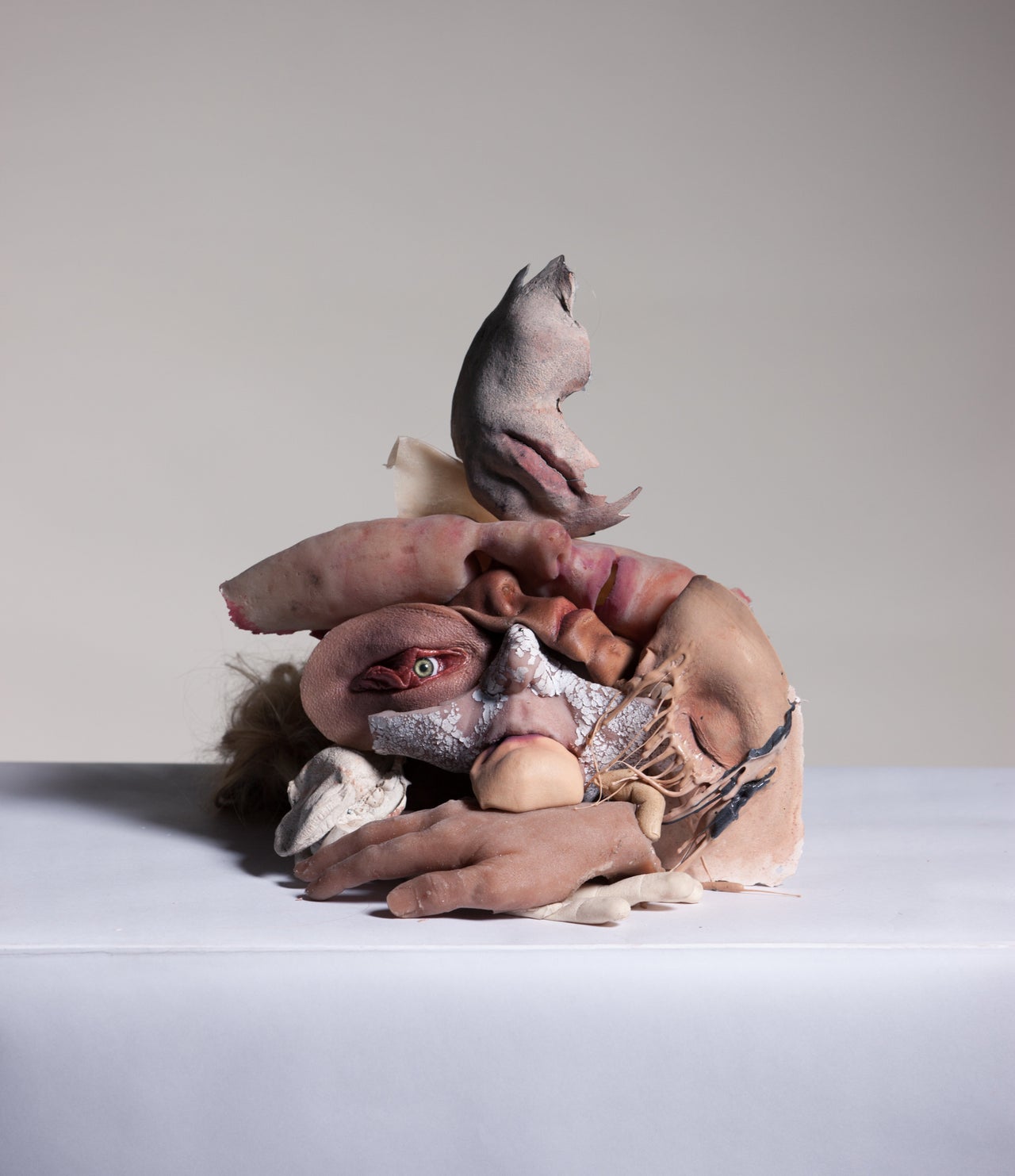
And then there is Sitkin, whose three-dimensional constructions feature familiar elements -- hair and teeth and ears and nails -- chopped up and spit back out as if by a serial killer with a cubist bent. Smoke billows from sockets where eyes should be and blood is the color of black ink. The lingering imprint of her striking images last way longer than the typical hour-and-a-half movie runtime.
From 15th century triptychs to contemporary slasher flicks, much of horror in cinema or on canvas stems back to the unshakeable feeling of being uncomfortable in your own skin. "I feel a real disharmony with my body," Sitkin said. "Just having a body at all. It feels very alien to me, I don't really care for the design of it. I am a sentient being, my body is both my means and demise. I would like to escape the confines of having a human form."
Have you ever looked in the mirror and recognized only most of what looked back? Dive into all your bodily heebie-jeebies with a look at Sitkin's most haunting works below.

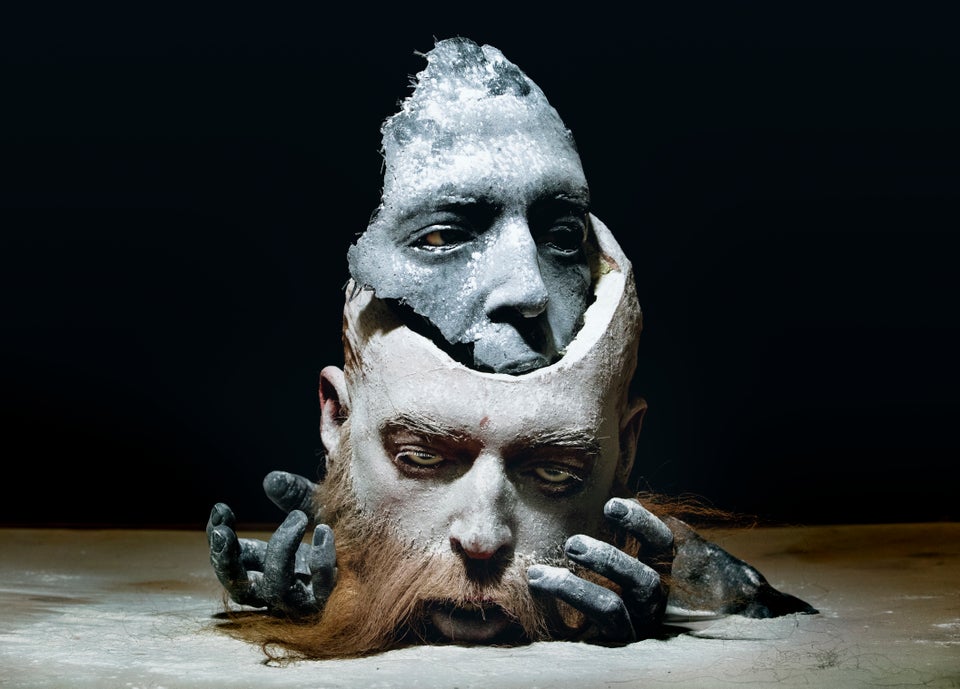

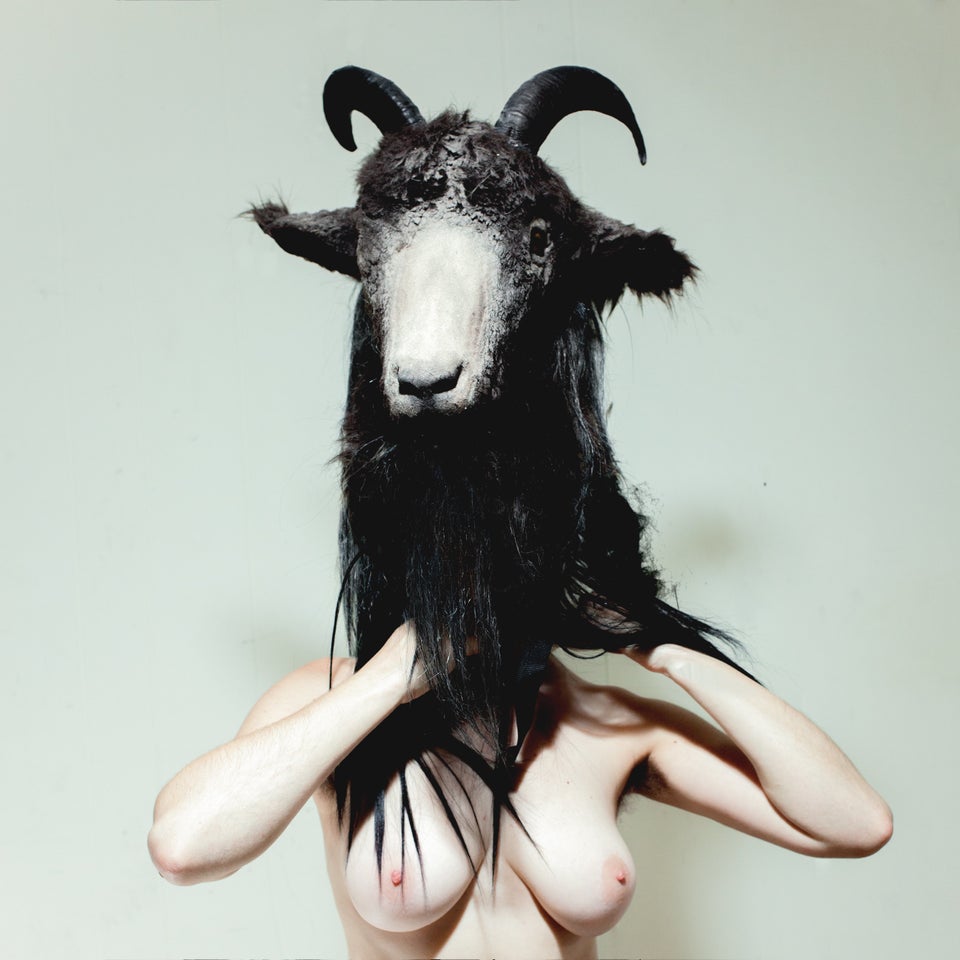
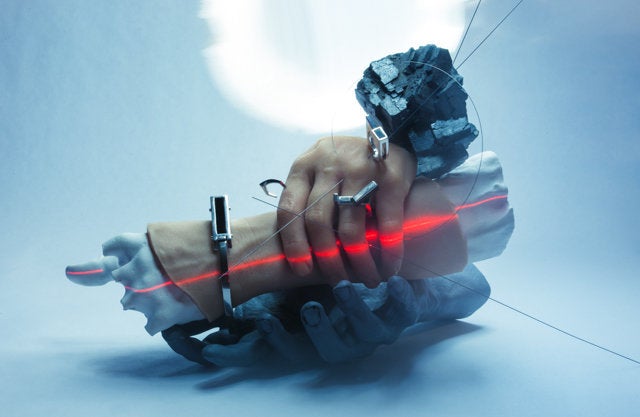
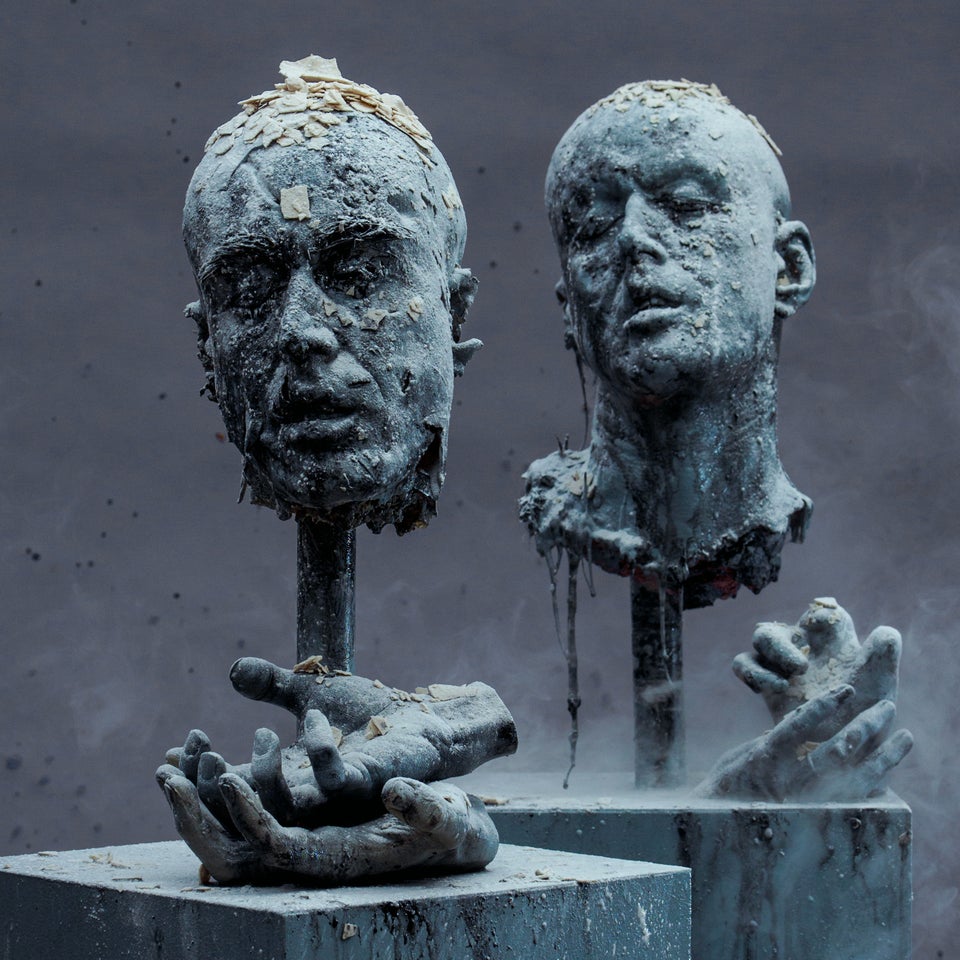

Also on HuffPost:
